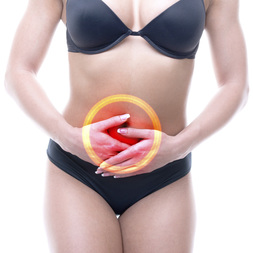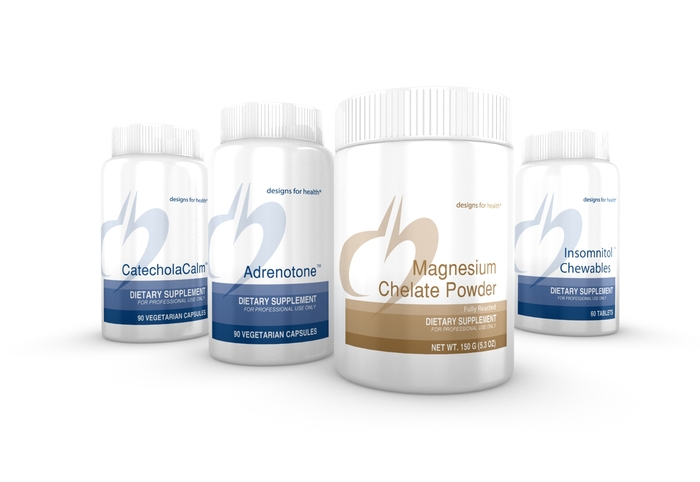 Does your monthly cycle sweep in quietly and take you by surprise, or do you KNOW well in advance when your period is coming without even looking at the calendar? If you’re like most women you fall on the latter end of this spectrum. Most also assume that having Premenstrual Syndrome (PMS) symptoms is just the way it is, the plight of being a woman. Symptoms such as mood swings, pain, decreased energy, bloating, breast tenderness, abdominal cramping and more have become so normalized in our culture that we expect it. If your monthly cycle hits you like a ton of bricks, you DON'T just have to suck it up and deal with. You have a lot of power to reduce the discomfort you feel as your cycle approaches. In this two-part blog series, I’ll provide 7 useful tips you can implement right away to reduce PMS symptoms. Before we get to the tips, let’s briefly review what causes us to experience PMS symptoms. Although our bodies’ hormone interplay is complex, one primary reason for PMS symptoms is estrogen dominance. This can mean that our estrogen levels are too high or our estrogen levels are too high in relation to progesterone (this ratio is super important), or both. There are many root causes for elevated estrogen levels -- I’ll address some of them in context of the tips below. If you’re experiencing PMS, consider taking some of these steps to improve your symptoms and get more of your life back. 1. Improve Detoxification – Your liver is responsible for making sure that you “use it and lose it” when it comes to estrogen. When estrogen hormones have served their purpose, they need to be removed from the body. So love up your liver. Eat cruciferous vegetables like broccoli, cauliflower, cabbage, and bok choy, as they support detoxification. You could also try roasted dandelion tea, a lovely liver tonic. Many women benefit from supplementing with DIM (Diindolylmethane) a phytochemical in broccoli that promotes production of protective estrogens and reduce the “bad” estrogens that can lead to breast and ovarian cancer. Since it’s challenging to eat a bushel of broccoli to get the concentration of DIM generally found in one capsule, some women find benefit in supplementation. CLICK HERE to schedule a free supplement consultation to find out if DIM might be right for you. 2. Increase Fiber – Fiber is found in a variety of foods, including fruits, vegetables, beans, legumes, and nuts. Fiber accompanies excess estrogens out of our bodies through our bowel movements. Aim for 35 grams of fiber daily, but increase SLOWLY, by 5 grams every 3 days or so to avoid digestive distress. Check out Nutrition Data to find out the fiber content in whole foods. 3. Reduce Xenoestrogens – Xenoestrogens are chemicals that can mimic estrogen and disrupt your hormone balance. Bisphenol-A (BPA) is a xenoestrogen commonly found in plastics, and is also used to coat the interior of food cans. Avoid using plastic food containers if you can, and never microwave in plastic or put hot food into a plastic container, as the BPA can leach into your food. Phthalates are industrial chemicals, and another xenoestrogen commonly found in flexible plastic as well as soaps and shampoos. Our skin is our largest organ and takes in a ton of toxins daily – choose safe skin and body care products and use the Environmental Working Group’s Skin Deep Database to find out the safety of personal care products you commonly use. Wanting more ways to say goodbye to PMS? I’ll publish an additional 4 tips next week. I’ll also talk about alleviating your PMS symptoms once and for all on May 4th -- SIGN UP to join me in Albany, CA to learn eating and acupressure techniques for hormone balance. Or SCHEDULE a complimentary 30-minute Health-and-Hormone Jump-Start session for a more personalized assessment. Resources: Beautycounter: http://www.beautycounter.com/dawnpreisendorf/ Environmental Working Group: http://www.ewg.org/skindeep/ Gottfried, S. (2015). The Hormone Reset Diet. Harper Collins. Gottfried, S. (2013). The Hormone Cure. New York, NY: Scribner. Mayo Clinic: http://www.mayoclinic.org/diseases-conditions/premenstrual- syndrome/basics/symptoms/con-20020003
2 Comments
4/1/2020 11:00:23 pm
I have a friend who always suffers from Premenstrual Syndrome (PMS). There are days wherein she is in a good mood, while there are also moments wherein she would cry for no reason. She would tell us that she was having her PMS and that we need to be extra understanding towards her situation. Well, I am not a woman to begin with, so I would just exert understanding than argue with a person who suffers from it.
Reply
Leave a Reply. |
Dawn Preisendorf,
|
Location6536 Telegraph Ave. Suite A101
Oakland, CA, 94609 Work with us in Oakland, near Berkeley, or anywhere via Zoom. |
|






 RSS Feed
RSS Feed